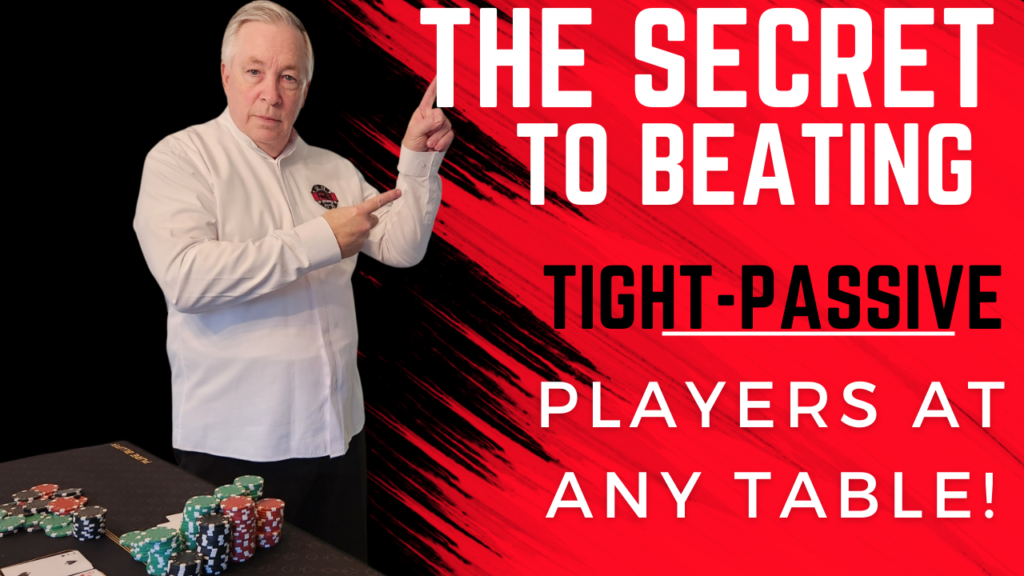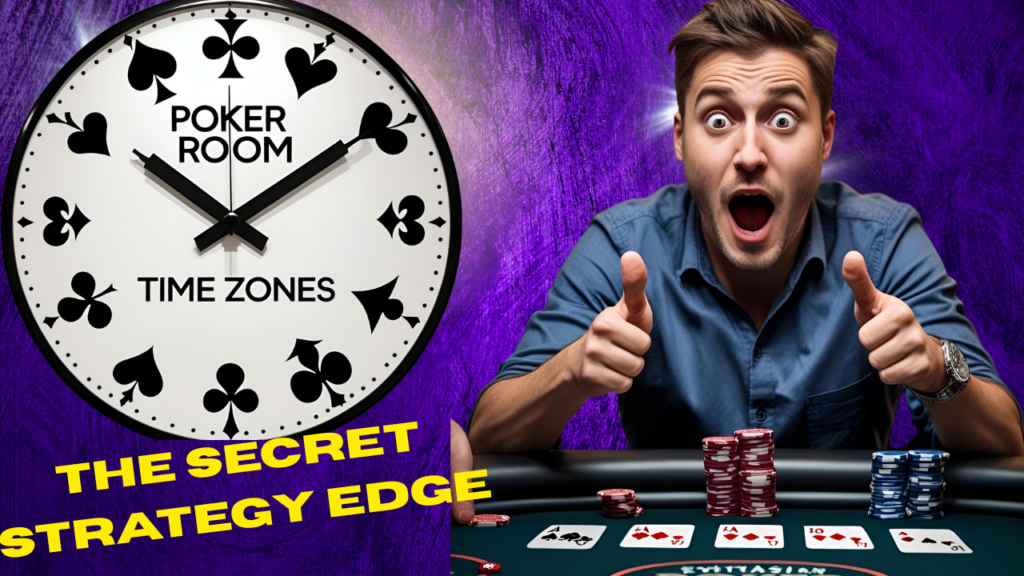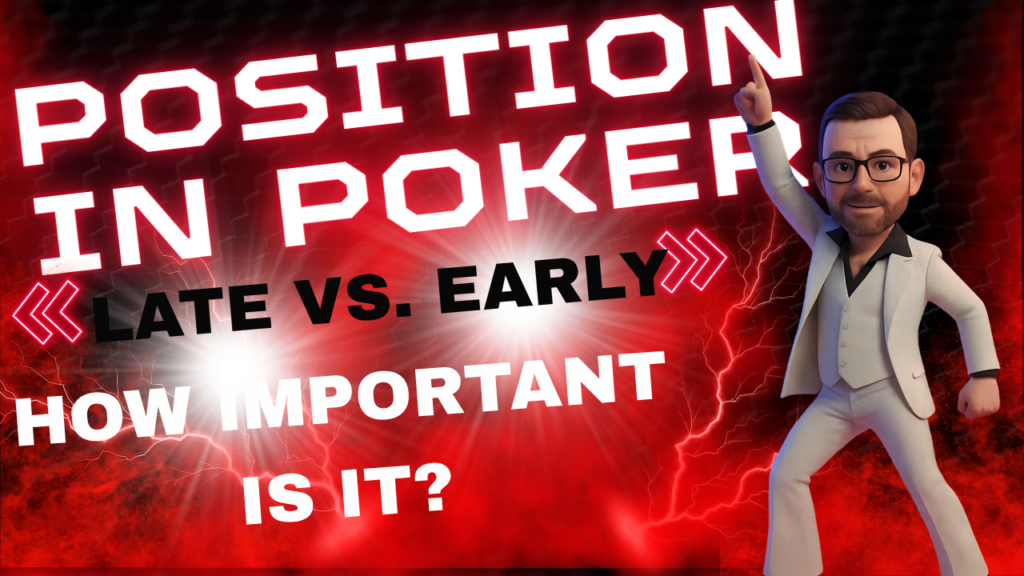GAME SELECTION IN TEXAS HOLD'EM
WHY THE TABLE MATTERS ALMOST AS MUCH AS YOUR CARDS
Game selection isn’t glamorous. It won’t make the highlight reels or spark a Twitter debate. But in the long run, it may be one of the single biggest factors separating winners from losers in Texas Hold’em.
Most players focus on how to play better. They study hand charts, watch training videos, and obsess over strategy — but never stop to ask if they’re even sitting at the right table. The truth? Even the best strategy can collapse under the weight of a poor table, which is why game selection is a top priority.
You don’t control the cards. You don’t control the dealer. But you do control where you play — and who you’re playing against.
Smart players understand this. They don’t chase action for its own sake. They don’t let ego or boredom put them in bad games. Most players know that the biggest edge in poker often comes before the first hand is dealt.
Game selection isn’t just a tip — it’s a skill. And like any skill, it can be developed, sharpened, and turned into a consistent weapon at the tables.
WHAT IS GAME SELECTION IN TEXAS HOLD'EM
Game Selection is the process of choosing the most profitable poker table based on a clear assessment of the players, the stakes, and the overall dynamics of the game. It’s not random, and it’s certainly not passive. It’s a deliberate strategic decision — and one of the most important a player can make.
In live, full-ring cash games, this means evaluating:
- The stakes and buy-in structure — Are they appropriate for your bankroll and your skill level? Are stacks deep enough to reward strong play and penalize weak opponents?
- Stack depth at the table — Are most players deep-stacked, giving you room for post-flop maneuvering? Or are you in a short-stack war with low upside?
- Table personality and player types — Which we’ll dive into next.
.

Too many players take the first open seat without thinking. Or they stay in a bad game out of inertia or ego. But every decision to sit down (or stay seated) is a fork in the road. One leads to profit; the other, to pain.
Game selection isn’t about comfort. It’s about edges — and whether you actually have one.
THE FOUR TABLE ARCHETYPES: PATL BREAKDOWN
Poker is situational. No table is purely one archetype. Even a table dominated by loose/passive players may have one or two TAGs sitting quietly — or a sudden seat change can flip the script entirely. What we’re describing here are the dominant tendencies that shape the flow of the game at any given moment. These patterns can and will shift over time, but recognizing the prevailing dynamic is one of the most overlooked edges in live poker.
LOOSE/PASSIVE TABLE
LOOSE/AGGRESSIVE TABLE
These are the “family pot” games—limpy, friendly, soft, and incredibly profitable for disciplined players.
Player Tendencies Driving the Action:
- Wide Ranges Preflop: Players enter pots with almost anything — suited junk, weak offsuit connectors, even hands like Q4o. They crave action and rarely fold preflop, making the table loose and unpredictable.
- Reluctant Aggression: They check and call far more than they bet or raise. Even with strong hands, they hesitate to build pots.
- Draw Chasing: They chase straight and flush draws with little regard for pot odds, inflating pots with weak holdings.
- Predictable Patterns: Calling = weak draw. Betting = hand strength. Very little deception in their lines.
- Social Focus: Many treat poker as entertainment. They’re here for fun and camaraderie — not EV.
Table Flow:
- Multiway pots are frequent.
- Showdowns are common.
- Bluffing is risky.
- Playing tight, strong ranges and value-betting relentlessly is the formula for long-term success.
These are rollercoaster games — wild, action-packed, and dangerous. Pots get bloated fast and often end without showdown.
Player Tendencies Driving the Action:
- Hyper-Wide Ranges: Players raise and re-raise with everything from suited connectors to garbage — just to “mix it up.”
- Relentless Aggression: They love big pots and hate being pushed around. They’ll 3-bet light and barrel flops with air.
- Emotional Volatility: Ego and machismo often override sound strategy. Losing a pot may trigger reckless retaliation.
- Overplay of Medium Strength: Hands like top pair/weak kicker or second pair become stack-worthy in their minds.
- Selective Respect: They’ll fold to strength sometimes — but they test you first.
Table Flow:
- High variance.
- Preflop pots often 3-4x the norm.
- Requires patience, courage, and well-timed counter-aggression.
- Great upside — but easy to get buried without discipline.
TIGHT/PASSIVE TABLES
TIGHT/AGGRESSIVE TABLE
These tables feel like a rock garden. There’s little action, few bluffs, and players mostly wait for premium hands.
Player Tendencies Driving the Action:
- Preflop Conservatism: Most hands are folded. Players only enter pots with premiums or clear set-mining odds.
- Call Over Raise: Even with solid hands, they default to checking and calling. Rarely do they take initiative.
- No Blind Stealing: Positional pressure is minimal. You can exploit this with light opens and small c-bets.
- Aggression Aversion: Even when ahead, they fear committing chips and often miss value.
- Predictability: Because they don’t mix up their play, their hand ranges are narrow and easy to define.
Table Flow:
- Many hands are won without showdown.
- Bluffing can work — but only when targeted carefully.
- Patience is required, but exploitation through position and selective aggression can yield steady profit.
This is the sharpest, toughest table — the pros or semi-pros. Every action is calculated, and mistakes are punished swiftly.
Player Tendencies Driving the Action:
- Disciplined Ranges: They play fewer hands, but when they enter, they’re usually strong or have clear equity advantages.
- Positional Awareness: They know when to apply pressure and when to lay back. Positional 3-bets and float plays are common.
- Relentless Value & Bluff Merging: They extract max value with made hands and barrel boards when their range allows.
- Mental Fortitude: Rarely tilted. They’re here to grind profit — not for ego or social time.
- Respectful Predators: They won’t berate bad play, because they profit from it. But they absolutely target weak spots.
Table Flow:
- Strategy-heavy.
- Bluffing exists, but only in spots where it’s mathematically sound.
- Margins are razor-thin — and you’re probably not the shark.
.
WRAPPING UP THE PATL BREAKDOWN
- While we’ve outlined four distinct table archetypes based on the PATL model, it’s important to remember: no table is pure. You’ll likely find every player type at every table, including the occasional LAG at a tight table, or a calling station in the midst of sharks. But what defines the game is the dominant dynamic — the tone set by the majority.
- You’ll also often spot Tight/Aggressive (TAG) players scattered throughout any table type. That’s no accident. TAGs are strategic — they choose tables for a reason. If they’re sitting in a loose/passive game, they’re there to feast on weak, calling players. If they’re parked in a tight/passive lineup, they’re planning to raise with impunity and punish fear. They adapt their edge to the environment — and so should you.
- Game selection isn’t just about who’s sitting — it’s about what’s happening. Understanding the prevailing flow of the table gives you the power to adjust, exploit, or exit as needed.
HOW TO READ THE TABLE WITHIN 10 MINUTES
The best players don’t jump into the first open seat they see. Instead, they observe. One or two orbits of careful watching can tell you everything you need to know.
Here’s what to look for:
FLOP FEQUENCY (VPIP TELLS)
SHOWDOWNS & HAND REVEALS
POT TYPE
Are players seeing 5, 6, or more flops per orbit? That’s a loose table. If only 2 or 3 players are routinely entering pots, you’re likely looking at a tight game.
Pay attention to what players are turning over. Are you seeing hands like J♣7♦, 9♥4♠, or low suited gappers at showdown? If so, this is a gold mine of weak play. Conversely, if everyone is showing strong ranges — AK, TT+, suited Broadway — the water may be deeper than it looks.
Are the pots consistently multiway and bloated, or heads-up and contested? Multiway pots point to loose/passive tendencies. Small, aggressive heads-up battles point to tight or aggressive dynamics.
AGGRESSORS VS LIMPERS
STACK SIZES & BUY INS
How often are you seeing limped pots versus raised pots? If raises are rare and preflop limping is standard, you’re in the land of passive fish. If players are routinely 3-betting, that’s a clue you’re surrounded by competent or aggressive opponents.
Don’t forget to glance at stack depths. Players who buy in short are often recreational and risk-averse. Players sitting deep — especially those splashing around — are either dangerous LAGs or soon-to-be donors.
GAME SECLECTION IMPACTS SEAT SELECTION
Most important: sit down with a plan — not on impulse. Treat your seat selection like a strategic decision. You’re not just playing poker — you’re choosing the battleground where your skills will be most profitable.

Sit to the left of aggressive players. Why? Position. You want to act after the maniacs and TAGs, not before. Being on their left gives you valuable information — you can flat their opens, control pot size, or punish their C-bets with well-timed raises. If you’re on their right, you’re constantly under fire and forced to guess.
Sit to the right of the weakest or most passive players. You want these players in the pot before you act — so you can isolate them, raise for value, and extract maximum profit. Sitting on their left means they’ll be checking and calling behind you, limiting your ability to punish their mistakes.
Avoid being trapped between two strong regulars. If you’re sandwiched between two competent, aggressive players, you’re playing poker in a vice. One will raise, the other will 3-bet, and you’ll spend the session folding or bleeding chips. That’s not strategy — it’s torture.
Position multiplies — or kills — your edge. Even with a perfect table, bad seat selection can neutralize your skill advantage. Conversely, at a mediocre table, the right seat can turn a break-even session into a profitable one.
IMAGE, EGO & EMOTIONAL CONTROL: ADAPTING TO THE TABLE YOU CHOOSE
Even the perfect seat at the perfect table won’t help if you bring the wrong version of yourself to the game.
Each PATL table type (Passive-Aggressive / Tight-Loose) invites a different strategic posture — and the way you present yourself can either complement or contradict that environment.
Here’s what that means:
LOOSE/PASSIVE TABLES
LOOSE/AGGRESSIVE TABLES
TIGHT/PASSIVE TABLES
TIGHT/AGGRESSIVE TABLES
You can afford to be calm, tight, and surgical. These players aren’t watching your image closely, so you don’t need to build a deceptive persona. Just play clean, value-heavy poker and avoid emotional reactions when they hit lucky rivers.
Emotional control is everything. If you show weakness or tilt, you become prey. But if you maintain calm and calculated presence, you can let their chaos work against them. Table image matters here — your vibe affects whether they target you or stay wary.
Image is a weapon. If you appear aggressive, you can exploit their folding tendencies. A quiet confidence — not ego — lets you dominate without confrontation. Emotional spikes stand out in these quieter games, so stay composed.
Here’s where ego gets expensive. These are often the best players in the room. If you walk in trying to prove something, you’re in trouble. But if you enter with awareness, control, and a balanced image — you can survive, even thrive, through selective battles
This is where image, ego, and emotional intelligence intersect. You don’t just select the right game — you must select the right version of yourself to bring to that game.
And above all — bring patience. It’s the silent weapon that lets your image work, keeps your ego in check, and protects you from emotional traps. Patience isn’t passive — it’s power waiting for the right moment.
WHEN TO LEAVE A TABLE-GAME SELECTION IN TEXAS HOLDEM
One of the most disciplined — and underrated — skills in poker is knowing when to get up. Staying in a game past its expiration point is how many solid players slowly bleed away their edge. Table selection doesn’t end when you sit down — it’s an ongoing process.
Here are key signs that it’s time to rack up:
THE TABLE GETS SHORT HANDED & TIGHT
THE LOOSE FISH BUST & LEAVE
THE PROS ARE NOW ISOLATING YOUR
THE ACTION DIRES UP
A full-ring loose/passive game can become a nit-fest after just a few players leave. When hands go from six-way limped pots to three-handed showdowns with no action, your edge evaporates.
If the soft spots are gone and not being replaced, ask yourself: who’s the new target? When you can’t identify the weakest player — it might be you.
If you’ve been winning and now find yourself getting 3-bet more often, value-towned, or trapped in multi-street plays — they’re onto you. Time to rotate out.
When the energy shifts and the table feels stale, it’s usually not in your head. Table dynamics shift constantly. A hot game can turn cold in 30 minutes. Recognize it, and move on.
It’s not quitting — it’s strategic repositioning.
Just like folding a hand, leaving a table is a decision rooted in long-term EV. Don’t tie your ego to a seat. The best players are always on the hunt for better spots — and never apologize for making the smart move.
TIME OF DAY MATTERS: WHEN TABLE DYNAMICS BREAK DOWN
Poker tables aren’t isolated ecosystems — they’re influenced by time, energy, and who’s walking through the door. While the PATL framework helps define dominant table personalities, those dynamics can shift dramatically based on time of day and day of the week.
MORNINGS & EARLY AFTERNOON
EVENINGS & LATE NIGHTS
WEEKENDS
Weekday mornings & early afternoons tend to feature more recreational players — retirees, laid-back locals, and older players. These tables often fall into the loose/passive or tight/passive zones, giving you a stable environment to grind value.
Evenings and late nights (especially Friday/Saturday) attract younger, aggressive, and often intoxicated players. These tables become a volatile mix of loose/aggressive and tight/aggressive, and can shift dynamics from hand to hand.
Weekends are wildcards. The pool of players is larger and more diverse, so you’ll often find blended tables — not clearly fitting any single PATL quadrant. Adaptability becomes more important than categorization.
The “purity” of any PATL table type diminishes during peak hours. A loose/passive table at 11AM may be completely unrecognizable by 9PM. That doesn’t mean the system is flawed — it means poker is alive. Expect movement.
Smart players adjust their expectations. They don’t cling to a label — they stay alert to change.
CHOOSE THE RIGHT GAME: OR THE GAME WILL CHOOSE YOU
Poker is, at its core, a game of decisions — and the very first decision you make is where to sit. Everything else flows from that. It’s not just about how well you play — it’s about whether you’re playing the right game in the first place.
Even the strongest strategy will bleed chips at the wrong table. Conversely, a solid but simple approach can be wildly profitable at the right one.
Smart players don’t just study hands — they study games. They know that bad table selection turns poker into combat, while good table selection turns poker into business.
Don’t just show up and play.
Choose wisely — or the game will choose you.






